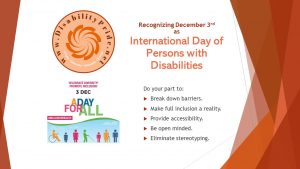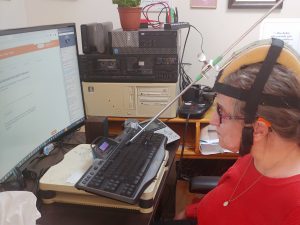
Courtesy of https://disability-memorial.org/
Every year on March 1st we acknowledge the Disability Community Day of Mourning. This year, more than any other, will mark a very different look to the way we mourn as a community. In the face of a pandemic that has had a disproportionate effect on disabled people and their communities, it is more important for us to honor the lives of disabled people murdered by those closest to them. Disabled people in our communities are generally ignored and it has become even more difficult to raise awareness of the problem of filicide of disabled people with the constant onslaught of tragedy caused by Covid-19.
Disabled people are receiving significantly less support than non-disabled people when it comes to healthcare specifically related to Covid-19. With ICUs being forced to prioritize life-saving measures based on criteria that is beyond the understanding of laypeople, including taking into account perceived “quality of life” as a determining factor in some cases. Disabled people are far too often seen as having less “quality of life” than non-disabled people which leads doctors to place them further down the priority list when it comes to finite resources in life-saving measures. This specific criterion frequently demonstrates that even (or especially???) doctors do not have a fundamental understanding of what it actually is to be disabled.
In Canada we are also facing the enshrinement in law of the assumption that disabled people have less “quality of life” in the amendments being proposed to Canada’s Criminal Code and Medical Aid in Dying laws through Bill C-7 which is currently being debated in Parliament. Bill C-7 includes expanding MAiD to people who experience “grievous and irremediable medical condition” but do not have an immediately foreseeable risk of death due to their condition. The United Nations has come down on this proposed amendment, citing that as a signatory nation on the UN Convention on the Rights of Persons with Disabilities, Canada would be in violation of that convention if the amendment to our Criminal Code is passed.
When it comes to the murder of disabled people by family and support people, we see the “quality of life” argument brought up in almost every single case. How often have we heard someone who murdered a disabled person defend themselves (usually to very sympathetic audience) by proclaiming that the victim was suffering? That their life was miserable, sad, pain-filled, and restrictive. That the murderer would want someone to do the same (kill them?) for them if they had been disabled.
The idea that some lives, especially disabled lives, are “less than” other lives is a terrifying and dangerous one. Subjective criteria like “quality of life” and “grievous and irremediable” open the door for increased discrimination, decreased social support, and as demonstrated by the ongoing pandemic, decreased access to resources that will sustain or improve a life for people who don’t conform to the “standard model” of what personhood is perceived to be.
The ongoing pandemic and Canada’s Bill C-7 are just large-scale demonstrations of what can happen when peoples’ lives are assigned “value” by some arbitrary set of criteria. We see smaller demonstrations of the same every time a disabled person is murdered by someone they are supposed to trust. It will be difficult to mourn the disabled lives lost to MAiD and the pandemic because there will be so many and it will be in a hospital or under a doctor’s care. We will continue to mourn disabled people who die violent deaths at the hands of trusted individuals and hope that the parallels are drawn between the three types of event.
Today, we remember and mourn:
Terri-Lynn Thompson – murdered by her husband October 14, 2019 in Belleville Ontario
Florence Girard – neglected by her paid attendant until she starved to death on October 13, 2018 in Vancouver British Columbia
Douglas Fischer – murdered by his daughter’s ex partner, part of a multiple murder, March 29, 2018 in Bluevale, Ontario
Levi Illingayuk – killed by his son in a fight, February 3, 2018 in Clyde River, Nunavut
Ninon Hardie – murdered by her son, December 6, 2017 in Toronto, Ontario
Richard Dubuc – killed by his brother, October 5, 2017 in Montreal, Quebec
Ryanna Grywacheski – murdered by her boyfriend, September 16, 2017 in Marystown, Newfoundland
Kaylie Lis-Lalande – neglected by her mother until she died from complications from starvation and dehydration, September 4, 2017 in Oakville, Ontario
Jocelyne Lizotte – killed by her husband February 20, 2017 in Montreal, Quebec
Lydia Whitford – died from unknown causes suspected to be the result of homicide or neglect at the hands of her foster mother, July 14, 2016 in Stonewall, Manitoba
Ronald McCabe – murdered by his son, March 7, 2016 in Kitchener, Ontario
Irene Carter – murdered by her daughter, January 13, 2016 in Lethbridge, Alberta
Jessica Hagan – murdered by her mother, September 8, 2015 in Cranston, Alberta
Anne Schmidt – murdered by her son, July 5, 2015 in Vineland, Ontario
Emily Janzen – murdered (along with her mother and aunt) by her father, May 7, 2015 in Rosedale, British Columbia


